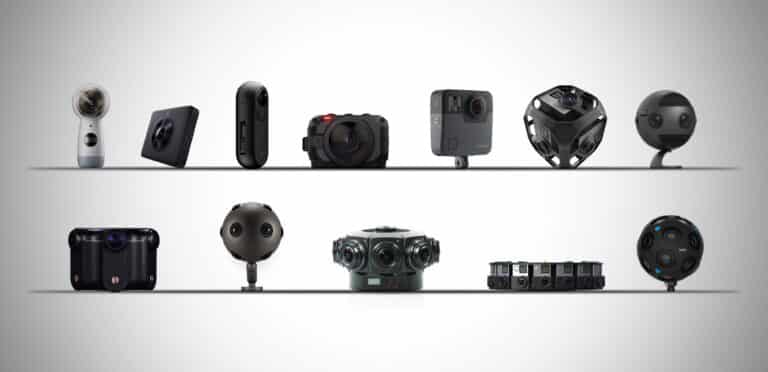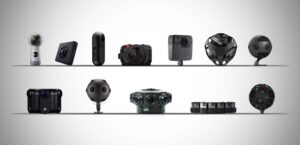A 360-degree camera, as the name suggests, catches the complete world around it. For a brief period, they were a big-ticket item, with hundreds of available models, including add-ons for popular smartphones.
Although the peak of the 360-degree era has passed, there are still some excellent options available. The use case has also changed. In the beginning, it was all about transmitting circular video for watching on virtual reality headsets, which have now found a place in gaming rather than media consumption.
Today, designers use 360-degree cameras to get pictures that a single-lens model can’t capture. Dual-lens footage is pulled out, warped, and reframed by software so that it may be cut in with 16:9 material.
What you will see here?
What are the most effective 360-degree cameras?
After analyzing over a dozen models based on video clarity, field-of-view, resistance to water, ease of use, and other aspects, we believe the Insta360 One X2 ($429) is the best 360 camera for most consumers. It’s compact and portable, with a stick-like form that makes it easy to hold in your hand. However, it does come with a normal tripod mount on the bottom.
The Insta360 One X application is compatible with iOS and Android phones, and it allows you to not only watch what the camera sees on your phone but to broadcast it to social networks. Other fantastic features of the camera also include the ability to record Matrix-style “bullet-time” recordings. Its capacity to make motion-stabilized footage to smooth out those bumpy rides is maybe its best feature.
The Insta360 One and Insta360 One X have been discontinued as a result of the introduction of the Insta360 One X2; you may still be able to locate them on sale, but only if they price less than $300.
You can choose from the following best 360 cameras:
Insta360 One X2
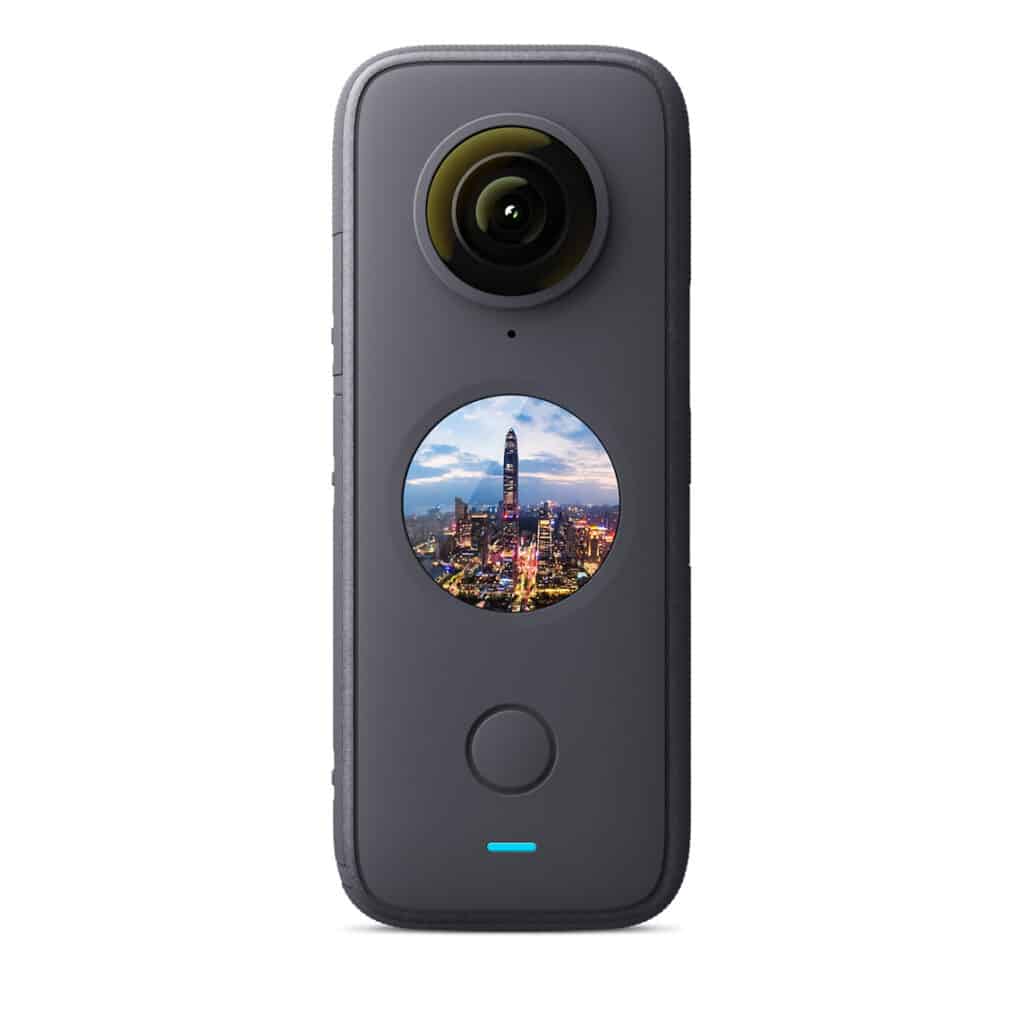
For most people, the Insta360 One X2 seems to be the greatest 360 camera. It’s because, as if its predecessor, the Insta360 One X2 not only has amazing hardware but also offers cutting-edge software and functionality.
The Insta360 One X2 is larger than the One X. But it’s now waterproof to 10 meters (33 feet) and includes a round touchscreen display that lets you watch the footage and change settings on the fly. It also boasts a longer battery life, lasting up to 80 minutes on a single charge.
The One X includes an improved image-stabilization technology that smooths out even the shakiest movies, and it can take 5.7k video (5760 x 2880) at 30 fps and 4K video at up to 50 frames per second. The FlowState image stabilization system smooths out pictures, and the TimeShift feature allows you to slow down or speed up certain areas of your video.
Insta360 One RS
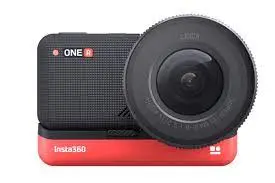
The Insta360 One RS is the ideal option for individuals searching for a 360 camera with a much more classic action camera design. This revolutionary camera, like its predecessors, the Insta360 One R, features a modular design that allows you to swap out the 360 lenses for just a long lens 4K camera or a camera with such a 1-inch sensor. In addition, the camera offers some fascinating features, such as video stabilization and a full interface with several strong editing tools.
The One RS screen can be spun around to frame yourself in recordings. But its diminutive size compared to the GoPro make navigating on-screen menus considerably more difficult. You’ll also need a frame to affix it to anything, just like prior GoPros. This is, nonetheless, a very versatile 360 camera.
GoPro Max 360 cameras
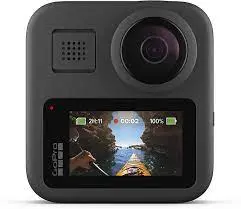
The GoPro Max is an excellent alternative to an Insta360 One X2 if you’re looking to make realistic videos of sports escapades or outdoor experiences. It’s waterproof to five meters without a case, as well as the editing process is swift and straightforward. If you want to convert your 360º video to a standard 2D film – and is one of the key advantages of 360 cameras – the app’s OverCapture program makes it simple to do so, as long as you’re okay with the finished footage being in Full HD.
Many of the capabilities found on GoPro’s Hero action cameras are improved on the Max, including greater HyperSmooth stabilization and 360-degree TimeWarp loops. The Max falls well short of becoming the ultimate GoPro both for 360 and normal film due to the slightly subpar 2D video footage (which would be the result of it being transformed from fish-eye photos). However, it’s an excellent choice for anybody who wants to capture action scenes in all directions without having to worry about picking where and how to aim their autofocus lens, then rapidly put everything together later.
Kandao QooCam 8K 360 cameras
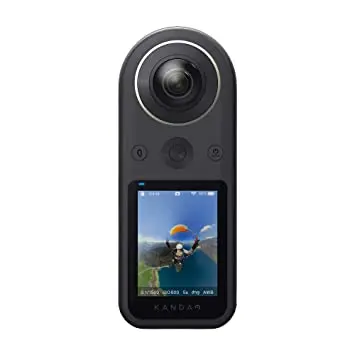
Numbers don’t often convey the whole story, but in the case of a consumer 360 camera, 8K is a huge number. With such a combination of 20MP CMOS sensors that operate together to capture 8K film at 30 frames per second and 4K video footage at up to 200fps, Qoocam’s 360 heavyweight outperforms the competition in terms of resolution.
Not only can it produce VR-ready video right out of the box, but it’s also the first non-pro version that allows 360 films to be cut down to widescreen without a significant loss of clarity. It also has a class-leading 2.4-inch OLED touchscreen for intuitive operation and framing, as well as SuperSteady image stabilization. Dynamic range, as well as color and contrast, are great in both stills and video.
Downsides? The video modes are restricted, and the companion app is poor, although there is a handy fast mode that downscales footage for easy mobile editing. There’s also no getting from around Qoocam 8K’s bulk or lack of waterproofing. Regardless, its visual content is unequaled in the 360 markets, assuming you can stomach its sticker price. There’s no going back after you’ve tried 8K.
Ricoh Theta Z1
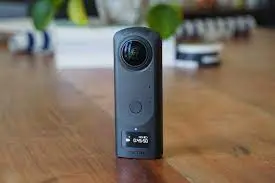
One of the problems of 360 cameras is that, because of their small sensor size, they aren’t very good at low-light photography and videography. If you need a 360 camera for that purpose and money isn’t an issue, the Ricoh Theta Z1 is a good option. Two 1-inch backside-illuminated CMOS sensors are used in this well-built gadget, resulting in some of the greatest photos we’ve seen in a 360 camera, especially in less-than-ideal situations.
Furthermore, the Theta Z1 boasts two microphones that produced excellent audio as well as the camera’s motion stabilization, which was also rather good. The Z1 runs on the Android os, and Ricoh is allowing third-party designers to develop plug-ins for the camera to expand its capabilities. However, this camera limits expandable memory, has a short lifespan, and requires the use of two separate programs to edit photographs and video. However, if image quality is your priority, that’s the camera to acquire.
Insta360 One R
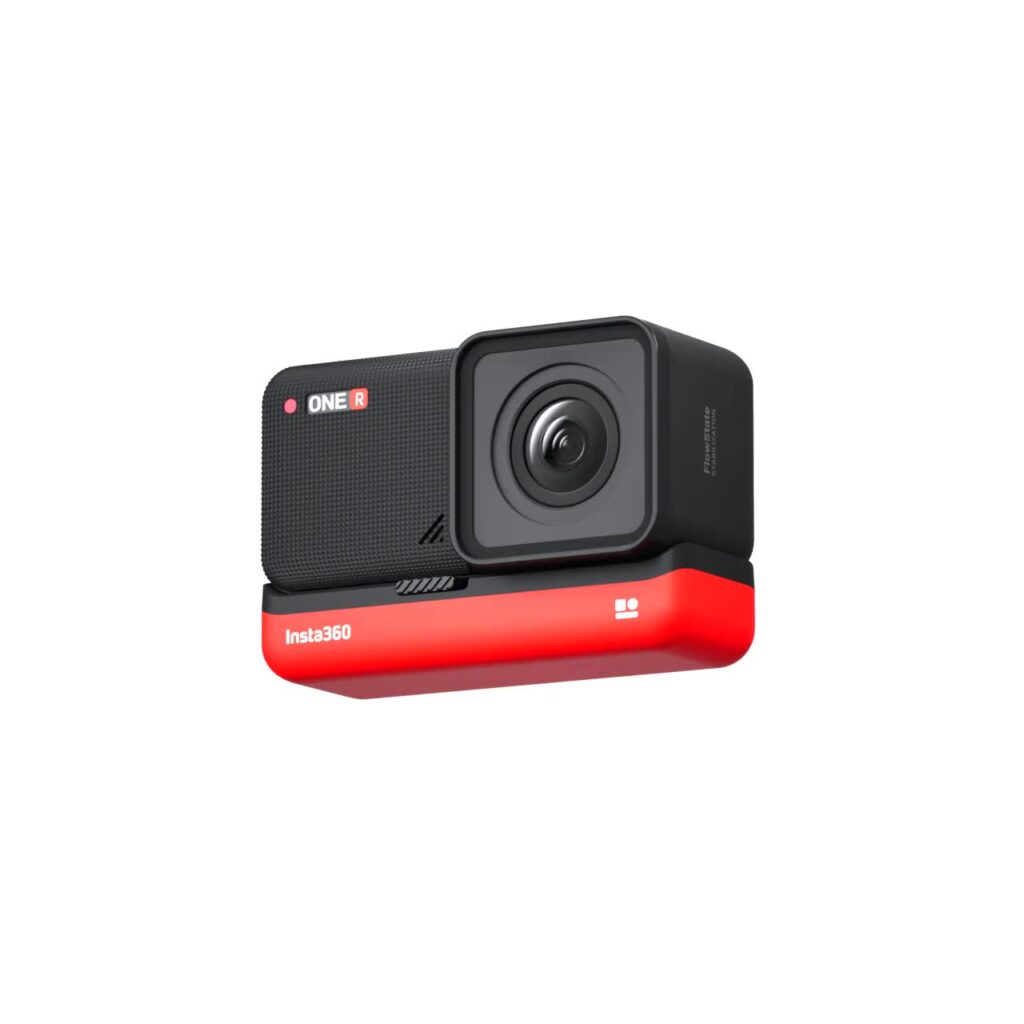
The modular architecture of an Insta360 One R would be its standout feature. The lens component, which divides into 3 blocks – battery, controls, and camera – changes to suit your needs. The dual-lens element, in addition to a 1-inch sensor module, is really exciting: it changes the Insta360 One R from such an activity cam to a capable 360 cam, capable of taking 360-degree video in 5.7K at 30fps. The stitching and stabilization are both great, with only a small flutter if your cut covers the boundary between sources. Sharpness declines at the edges of each lens, just like the GoPro Max. But performance in bright situations is good, with good clarity and low noise.
In low light, however, where software processing errors develop, resulting in juddering and blurred frames, the same cannot be stated. Choosing and moving one of five field-of-view in the app to edit 360-degree video is slightly restrictive but ultimately speedy. While optional subject-tracking gives the film a professional look with no effort. It isn’t nearly as elegant as the GoPro Max. But is less expensive, has a unique modular design, and produces an excellent 360-degree film. The Insta360 One R might be a great 360 hit with some software changes.
When selecting a 360 camera, note this:
When it comes to 360 cameras, there are two types to choose from compact, pocketable stick-style cameras and bigger squarish (or round) cameras. The former, like the Insta360 One X, are less priced and meant for more casual and spontaneous photography. Cameras like the GoPro Hero Max. Those that are greater in size but create a higher-quality video, fall into the second category. Because of the nature of the latter sort of 360 camera. You’ll almost certainly need to use it with a tripod or another mount if you need to get acceptable footage.
Before you buy a 360 camera, consider about just how you plan to use it; if you just want to take some fun selfies with your friends, stick-style cameras will suffice. A larger camera could be the better choice if you wish to film your adrenaline-pumping adventures when jumping or skiing.
Conclusion
Most 360 cams have multiple bulbous lenses since they need to catch all 360 degrees of movement. In addition, if you do not want part of the image to show the side of your head. You’ll need to position the camera somewhat far away from your body.
You’ll need a selfie stick as well. The form of so many of these cameras made them difficult to hold in my hand, with a few exceptions.
All of the cameras work in the same way as a smartphone; when you switch them on, they all form a Wi-Fi hotspot that you connect with to your phone. Then simply launch the companion app and utilize the screen of your phone as a viewfinder. Pairing the cameras to my smartphone was a breeze for the most part, and the video stream from the cameras was clear and stutter-free.


